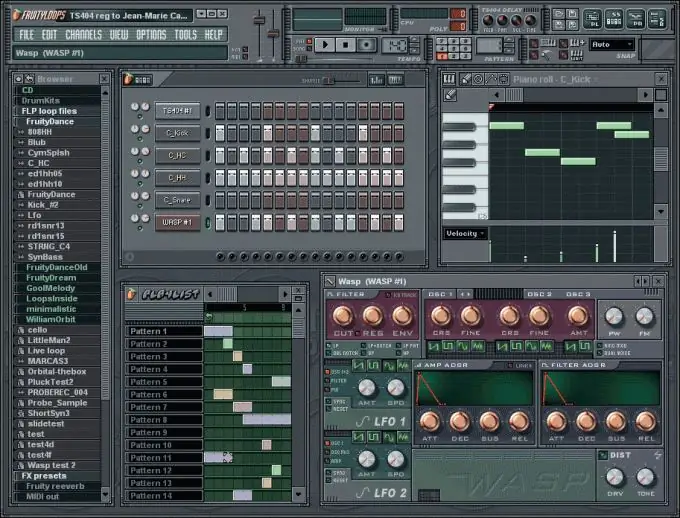A lot of young people are fond of rap and hip-hop today, and many are interested in the question - how to make a suitable soundtrack for their texts read on the microphone, and how to make a high-quality musical beat, or a special backing track for rap. Since rap is a modern style, and you are planning to create a backing track that meets all standards, you need to use special programs for creating electronic music samples to create it.

Instructions
Step 1
Using high-quality software for musicians, you can create a more or less professional music track step by step, gradually improving your skills.
Step 2
There are a few common programs that have enough parameters to make a good beat. An example of such a program is Imagine Line Fruity Loops Studio. This program is good enough for aspiring musicians - it is easy to understand and has an intuitively simple interface. Its disadvantage is the limited number of samples and tools for creating them, but if you wish, you can find additional samples on the Internet and install them manually.
Step 3
A more professional and more difficult to learn program is Steinberg Cubase. It should be used if you are confident in your abilities and have already dealt with sound software. One of the best programs for creating rap mixes is ProTools, but you can only use it if you have a powerful enough computer and a strong sound card.
Step 4
To create something really worthwhile in the world of music, you need not only good software, but also an equally high-quality synthesizer with workstation functions. The right workstation for professional music work costs a lot and must be chosen carefully to ensure you have the right set of tools, features and sound settings for your creativity. Good workstations come from Korg, Yamaha and Roland.
Step 5
Start creating a rap backing track by creating a beat - the main bass rhythm, which is then superimposed on the melodic instrumental part. Take your beat seriously - this is the main rhythm that should be the pulse of your composition, be powerful and varied. Make organic rhythm transitions depending on the planned places of the melody change.
Step 6
After the rhythm part is thought out and created, overlay the melodic part on it - and here you need to turn on all your imagination using samples and synthesizer sounds.
Step 7
The melody should not be perceived as mixed and incomprehensible - it should be simple, but memorable and interesting, and a constant powerful rhythm should be heard at any moment of the track.
Step 8
Towards the end of the track, diversify it with some unusual instrument or other type of rhythm section.
Step 9
After the track has been created - start mixing it, for which give the track to the sound engineer or learn the basics of mixing music yourself.






